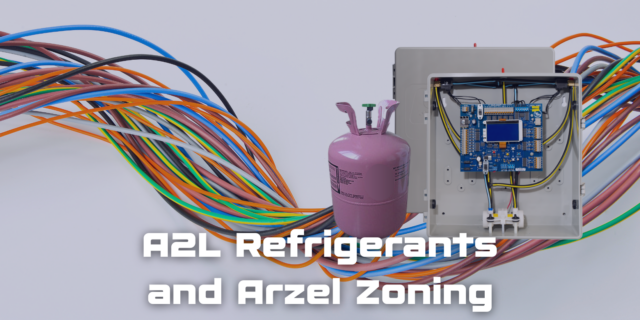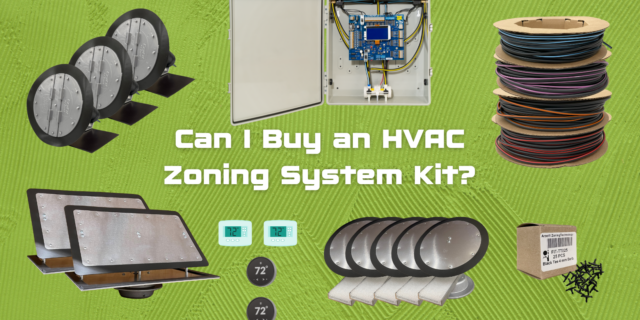How to Explain HVAC Zoning to Your Clients Effectively

As an HVAC professional, you understand what HVAC zoning can accomplish. What you may not know is how to explain these systems to your clients effectively. To ensure your clients truly grasp the benefits of HVAC zoning and how it can enhance comfort in their spaces, it’s important to tailor your approach. Begin by discussing their specific comfort issues and how they utilize their space. Then, illustrate how zoning can address their concerns by offering consistent temperatures throughout their home or business. Let us help, too! We have zoning resources for homeowners and building managers available for you to use.
Start with Client Comfort Issues and Space Usage
Ask about your clients’ specific comfort concerns and how they utilize their space. Find out if there are any rooms that feel too hot or too cold. See if they notice significant temperature differences between various parts of their home or business. Knowing their comfort needs ahead of time will help you explain exactly how HVAC zoning will work for them.
For instance, ask if they have trouble sleeping in an upstairs bedroom that becomes unbearably hot during summer. Find out if they struggle to keep a downstairs office warm during winter. Discuss whether they frequently adjust registers or use space heaters and fans to try to balance temperatures. This helps you paint a picture of how their current system may be falling short in providing comfort.
Next, consider how they use different rooms throughout the day. Do they have spaces that remain unoccupied for long periods? Perhaps they have a guest room or a basement that is rarely used. Point out to your client that HVAC zoning allows for individual temperature control in each area, meaning they can set different temperatures for different zones based on usage. This not only enhances comfort but also maximizes energy efficiency by not wasting resources on conditioning empty rooms.
Illustrate specific scenarios that zoning can solve. For example, a family room might need cooling during the day but the bedrooms might need heating at night. With zoning, each area can be set to its optimal comfort level independently. Discuss the convenience of being able to tailor the climate in each zone according to their daily routine and preferences.
Engage them in a conversation about the flexibility and control zoning systems offer. Explain how zoning can eliminate the constant battle of adjusting thermostats and registers. It offers a seamless way to maintain ideal temperatures in every part of their home or office. This approach not only addresses their immediate comfort concerns but also introduces them to the broader benefits of zoning, such as improved energy efficiency and potential cost savings.
Focusing on their personal experiences and space usage will help your clients visualize the practical advantages of HVAC zoning, making the concept more relatable and easier to understand.
Explain HVAC Zoning in Simple Terms
Tell your client to think of HVAC zoning as giving each area its own thermostat. Instead of one thermostat trying to regulate the temperature for the entire house, zoning allows for multiple thermostats, each managing a specific zone. This setup means that you can have a cool living room while keeping a bedroom warmer, all at the same time.
For clients who want to know how it works, explain the core components of a zoning system: thermostats, zone dampers, and a control panel. The thermostats measure the temperature in each zone and send signals to the control panel. The control panel then tells the zone dampers, which are like valves in your ductwork, to open or close based on the temperature needs of each zone. This precise control allows conditioned air to flow only where it’s needed, ensuring that each zone maintains its desired temperature.
Use examples to explain the benefits of zoning. Here’s one: imagine you’re cooking in the kitchen. Typically, the heat from the stove would make the whole area warmer, while other rooms in the house remain at the set thermostat temperature. With zoning, the thermostat in the kitchen can adjust the temperature to make it more comfortable, without affecting the temperature in the rest of the house. Similarly, if you have a seldom-used guest room, you can set its zone to a more energy-efficient setting without compromising the comfort in your main living areas.
In addition to comfort, zoning also offers energy efficiency. Traditional HVAC systems often condition the entire house based on the needs of the area where the thermostat is located, leading to energy waste in unoccupied spaces. Zoning eliminates this inefficiency by ensuring that only the occupied zones receive conditioned air. This targeted approach can lead to noticeable savings on energy bills.
Think of zoning as upgrading from a one-size-fits-all approach to a customized solution that meets the specific needs of each area in your home or building. Whether it’s for a multi-story house where different floors have different temperature needs or a space with different usage patterns in different rooms, HVAC zoning provides the flexibility to make every part of your space just right.
Share Additional Resources with Clients
To help your clients fully grasp the advantages of HVAC zoning, equip them with a variety of resources that delve into zoning’s capabilities. Start by providing them with our brochure designed specifically for homeowners. This brochure clearly outlines the core benefits and functionality of zoning systems, making it an excellent starting point for anyone unfamiliar with the concept.
In addition to the brochure, recommend that they watch our detailed explainer video. The video offers a visual and straightforward demonstration of how zoning can revolutionize their comfort experience, making complex ideas easier to understand. It’s an engaging way for clients to see the practical applications and advantages of zoning in real-world scenarios.
For those clients who prefer a deeper dive, direct them to our Answerbook website. This comprehensive online resource is packed with FAQs, expert tips, and in-depth explanations that can answer almost any question they might have about HVAC zoning. The Answerbook covers the installation process, how zoning works, and what clients can expect.
You might also share success stories from previous clients who have experienced the positive impacts of HVAC zoning. Real-world examples can help illustrate the tangible benefits and provide relatable scenarios that resonate with your clients’ own experiences.
Lastly, don’t forget to mention our warranty and any available maintenance plans that you provide. Knowing that they have ongoing support can provide an extra layer of confidence and reassurance.
By offering a rich array of resources—brochures, videos, detailed websites, and success stories—you give your clients multiple ways to understand and appreciate the full spectrum of benefits that HVAC zoning can bring to their homes or businesses.
Why Sharing Your Knowledge Matters
Ultimately, your approach to explaining HVAC zoning can make a difference in how clients perceive its value. You’ll help them visualize the benefits of a zoning system when you tailor your conversations to their specific needs. It’s not just about comfort; it’s also a solution that can improve energy efficiency and save on energy costs.
Empower your clients with the knowledge that zoning allows for tailored climate control, enhancing their daily living experience. Explain that with HVAC zoning, they can achieve a balanced temperature throughout their home or office. This eliminates the need for constant thermostat adjustments and the use of supplemental heating or cooling devices. This level of control can lead to a more harmonious and comfortable environment, tailored specifically to their preferences and lifestyle.
Additionally, reassure your them that the investment in HVAC zoning is backed by resources designed to support their journey. Clients can educate themselves on the system’s benefits and function with the brochure, Explainer video, or Answerbook. These resources are not just informative but also instrumental in building their confidence in making a decision.
Encourage them to consider real-world examples from other homeowners or businesses that have experienced the advantages of zoning. Sharing these stories can make the benefits of HVAC zoning more tangible. Clients can see the real impact it can have on their comfort and energy usage.
Finally, remind them that you are available to guide them through every step of the process. Your expertise and support are crucial in helping them make an informed decision. With your guidance, they can look forward to a more comfortable, efficient, and cost-effective living or working environment.






